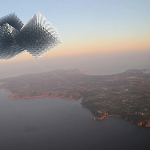
Kite Based Sensor Array by Pamir Kite Network
 Ted Wong May 14, 2015 11:42 |
This would be pretty cool. I wonder if the kites could also be used as telecommunication antennas.
|
 Natasha Udu-gama May 15, 2015 09:26 |
Could you please provide a brief summary as to how kites would help the local communities in the Pamirs with adapting their ecological calendars? This will help us in screening this proposal. And remember, the deadline is tomorrow 16 May at 11:59 EDT! Thank you so much for your contribution and interest in this topic.
|
 Michael Hayes May 16, 2015 04:55 | Proposal contributor
Hi Ted,
Yes, upgrading kites for wireless communications is rather easy.
https://www.endaga.com/
|
 Michael Hayes Jun 6, 2015 01:47 | Proposal contributor
Judges' Feedback:
The project should demonstrate an early engagement with the community in the development of the project, its outcomes or if the project design would be compatible with the cultural norms of the community.
There should be discussion of sensors, how they could be afforded, how they should be deployed, or even how the system would work in a remote community.
|
 Michael Hayes Jun 6, 2015 03:43 | Proposal contributor
I would like to thank the judges for allowing me to go forward with this particular proposal.
To help myself work through the needed areas of interest, I've created a working paper that can be found at:
https://docs.google.com/document/d/1HIsioo00YEOXgsQBpqorqF6XSky9U9mxrcxvHILmwqY/edit#heading=h.wj93ulopbplc
“Judges' Feedback [JF]:
[JF1] The project should demonstrate an early engagement with the community in the development of the project, its outcomes or if the project design would be compatible with the cultural norms of the community.”
At the Community Outreach Level:
The Art of Gudiparan Bazi (a)(b) should be adhered to as much as practical in the initial community outreach efforts. And, that will ultimately require mock aerial combat trials along with the more sedate scientific flights/crafts. Another way to engage the community at both the developmental and operational level is to fold kite fighting skills into the local hiring (HR) battery of tests.
The use of both ultra-high tech and traditional technologies needs to be supported as a means to encourage broad cultural acceptance of a wide spectrum of tether technologies:
- At the traditional technology level:
Weather kites originally used flax rope until steel wire become widely available and thus buying local flax for a simplistic flax rope factory would be a reasonable start in the community trust development arena due to the ‘circular economy’ specter of benefits.
In example:
At the metastrategy level: By focusing upon the use of flax in the technical systems designs, the farming community gains demand/value in their flax crops/fabrics and the project gains vast amounts of relatively low cost locally sourced flax tether line and sail fabric.
At the second order effect level: The worn out/used flax rope/fabric, which is no longer suitable for flight use, would be reduced to biochar and used to enhance the productivity of the flax fields.
At the third order effect level: The flax field soils are irrigated and carbon enhanced using high wind flax kite energy and flax rope/fabric waste.
[JF] “There should be discussion of sensors, how they could be afforded, how they should be deployed, or even how the system would work in a remote community.”
Funding:
The above advice pivots upon the funding issue as literally many millions of dollars can be spent and earned using tethered technology. Where is the funding coming from and how much can be made available?
To be continued.
Sensor/Platform Leasing:
To be continued.
Remote Operations:
To be continued.
|